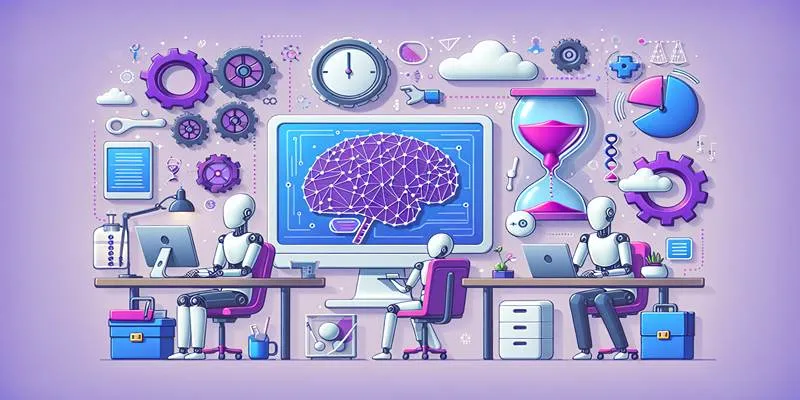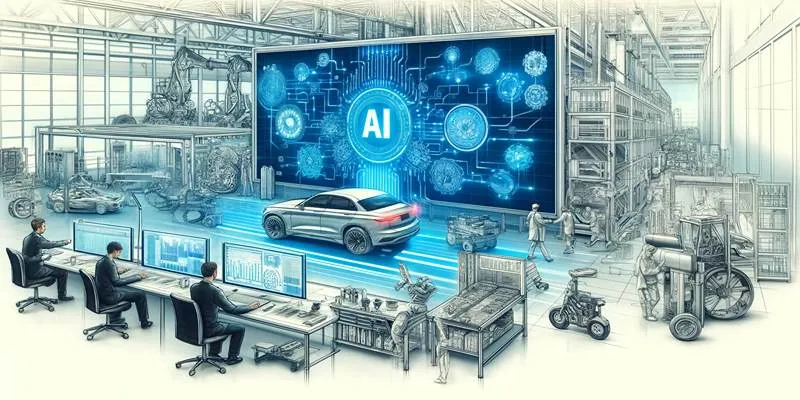Managing large buildings or facilities is no easy task. It requires a significant amount of work to ensure smooth operations, from repairing broken systems to monitoring energy consumption. However, with the advent of artificial intelligence (AI), facility management is becoming more streamlined and intelligent. AI automates many daily tasks, saving time and enhancing building functionality. This post will explore how AI is transforming facility management, its role in maintenance and operations, and the future of smart buildings.
What Is AI in Facility Management?
AI in facility management involves using smart technology to oversee building operations, including:
- Real-time monitoring of building systems
- Predicting equipment maintenance needs
- Managing energy use to reduce waste
- Automating lighting, heating, and security systems
By leveraging data from sensors and software, AI can make decisions that typically require human intervention. It minimizes errors, reduces costs, and enhances the comfort and safety of building occupants.
How AI Automates Maintenance Tasks
In the past, facility teams addressed issues only when they occurred, a method known as “reactive maintenance.” This approach can exacerbate problems and increase repair costs. AI enables a shift from reactive to proactive maintenance, alerting teams to potential issues before they arise.
Predictive Maintenance Using AI
AI gathers data from equipment through sensors, capturing information such as temperature, pressure, and vibration. When anomalies are detected, the AI system alerts the team.
For example:
If a motor vibrates more than usual, AI can identify the issue and suggest a
check before failure occurs.
Benefits of predictive maintenance include:
- Fewer breakdowns
- Reduced repair costs
- Minimized downtime
- Extended equipment lifespan
AI and Daily Operations Automation

Facility operations encompass lighting, HVAC (heating, ventilation, and air conditioning), cleaning schedules, and security. Manually managing these aspects can be time-consuming and prone to errors. AI simplifies this by automating routine tasks.
Smart Building Systems
Smart buildings employ AI to adjust settings automatically. For instance, lighting systems can dim or brighten based on natural light or occupancy, while HVAC systems adjust temperatures room-by-room based on occupancy. This enhances efficiency and occupant comfort.
AI-based operational tasks include:
- Smart lighting control
- Energy use monitoring and reduction
- Air quality control
- Automated door access and security systems
These automated systems continuously learn and improve based on usage patterns.
Benefits of Using AI in Facility Management
AI offers numerous advantages when integrated into building management. Some key benefits include:
Cost Savings
AI provides early warnings to prevent major repairs and optimizes energy usage, resulting in significant cost savings over time.
Improved Efficiency
Automation allows teams to focus on more critical issues, ensuring smoother operations and more reliable systems.
Better Comfort and Safety
AI automatically adjusts lighting, temperature, and air quality to create a comfortable environment. Security systems also become more intelligent and responsive.
Real-Time Monitoring
AI enables facility managers to monitor equipment and building conditions 24/7, allowing for swift responses to any issues.
Real-World Example: Smart Campus Management
Many universities now utilize AI to manage campuses, tracking classroom usage, energy consumption, and even restroom cleaning schedules.
One example:
- Sensors in classrooms detect when a room is vacant and turn off lights and HVAC systems.
- AI schedules restroom cleaning based on usage rather than time.
This approach saves energy, enhances cleanliness, and reduces manual labor.
Challenges in Using AI for Facility Management
Despite its benefits, AI integration does present challenges. Facility managers should consider:
- High setup costs: Initial installation of sensors and smart systems can be expensive.
- Training needs: Staff require training to effectively use new systems.
- Data privacy: Protecting the large volumes of data collected by AI is crucial.
- Maintenance of AI systems: Even AI systems require regular updates and maintenance.
Despite these challenges, many organizations find the benefits far outweigh the difficulties.
Key Technologies Supporting AI in Facilities

AI systems rely on a network of supporting technologies to function effectively:
- IoT (Internet of Things) : Connects sensors, equipment, and systems to gather real-time data
- Machine Learning : Enables systems to learn patterns and make predictions
- Digital Twins : Create virtual models of buildings for performance simulations
- Cloud Computing : Provides remote access and storage for large data sets
- Automated Workflows : Facilitate task assignment and monitoring with minimal manual input
These technologies form the backbone of smart building ecosystems.
How to Start with AI in Facility Management
If you’re considering AI for your facility, here are some steps to get started:
- Assess current systems: Identify tasks that are currently manual or inefficient.
- Start small: Begin with one area, such as lighting or HVAC automation.
- Choose the right tools: Select trusted AI software and sensor systems.
- Train your staff: Ensure your team understands how to use the new system.
- Monitor results: Track cost savings, energy use, and performance improvements.
Beginning with a small-scale implementation and then expanding is the most cost-effective way to adopt AI.
Conclusion
AI in facility management is revolutionizing building maintenance and operations. Through automation, real-time data analysis, and intelligent decision-making, facilities operate more efficiently, save costs, and enhance occupant experiences. While challenges exist, the benefits of adopting AI are significant, particularly as a long-term investment in smarter, more sustainable operations. As technology advances, AI will become an integral component of modern facility management strategies.
 zfn9
zfn9























